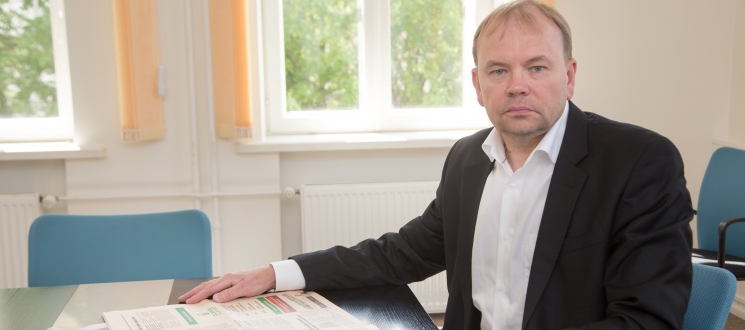It is a pleasure to present the Authority’s yearbook, which provides an overview of our activities in 2020. It is typical of yearbooks covering the last year to emphasise the exceptional nature of the year 2020. In the last year, competition issues were not the main focus for obvious reasons; however, economic life continued despite the pandemic and free competition is still one of the main pillars of the economy.
A year ago, in mid-March, it was not possible to foresee what the situation would be like with the economy closing down — nothing like that had ever happened before. Naturally, the worst was feared, with the 2008–2009 crisis still fresh in memory – the financial crisis of those years hit Estonia particularly hard and led to the economy declining as much as 14% in 2009. Fortunately, the economic downturn last year was ‘just’ 2.9 percent and Estonia is among the best in the EU with that result. Crises are different and a systematic financial crisis is very different from a health crisis. Predicting the future is a thankless job and the only way to make predictions is to look for an analogy in history. The Spanish flu claimed millions of lives 100 years ago, but it did not shake the economy. It can even be said that it led to the economic prosperity of 1920s, which ended in 1929 with a stock market crash. The Great Depression, which started in 1930 and lasted for almost a decade, was brought forth by economic reasons. Therefore, there is still reason to be optimistic about the future and to hope that the health crisis can be brought to an end this year. Economy will continue to move forward and it is important to keep in mind that free competition is the cornerstone of economic development. It is particularly important to recall this in the context of the state aid currently provided. It cannot be denied that aid is needed in certain circumstances and by some sectors, but in the end, economic development is still driven by free competition.
From among last year’s activities, the competition analyses of pharmaceutical and telecommunication sectors should be highlighted. The first has been under our heavy scrutiny also in the past, and the main recommendation in this area is to apply the principles of free market economy more. At the same time, the pricing of medicinal products is highly important for the consumer and much could be done in terms of price regulation. In the field of telecommunications, it is good to note that the prices of Internet services in Estonia are generally at a reasonable level; the situation in this sector can, however, still be improved in terms of price regulation.
An important indicator of economic activity is the number of concentrations. For example, if in 2009 and 2010, respectively, only 17 and 10 concentration applications were submitted, then in 2019 and 2020, the number of applications was 45 and 36, respectively. Thus, the crisis of ten years ago is not comparable to our situation today. It is worth noting the concentration of cinemas as the most important procedure, this has also been covered in more detail as part of this yearbook. Although the entertainment sector has been hit hard during the pandemic, a monopoly cannot be allowed in a sector that is so important to consumers. After all, we still want to go to the cinema and we will continue to do so; watching movies on TV or computer at home is not a substitute for going to the cinema – it is also very important that consumers have a choice and thus more favourable prices.
Regarding energy, as well as economic regulation, green transition and the aim of achieving carbon neutrality by 2050 cannot be ignored either. It is one of the greatest technological revolutions in the history of mankind and a precise plan and objective have been put in place for achieving it. It is important for the consumer that this takes place under conditions of free competition and that the price of energy would not increase. In light of this, the yearbook also covers important issues such as subsidies for renewable energy and security of electricity supply. The basic documents for the EU’s green transition have also repeatedly emphasised that the objectives must be achieved within the framework of free competition.
The energy sector will be covered in more detail in the overview of electricity and gas markets published on our website, and during this year we will once again publish an overview of the results of price regulation; we do this every three years. It can already be confirmed today that we have been successful in this area. For example, heating and electricity network fees have remained unchanged or even decreased over the last decade. The same tendency can also be seen in the field of other utilities, for example, the price of water in Tallinn remained unchanged from 2010, until the price fell significantly for consumers at the end of the year prior to the previous year.
In conclusion, I am able to reaffirm that the aim of our work is to ensure free competition and consumer welfare; we will continue to work towards this objective in the current year.
Kind regards
Märt Ots
Director General
